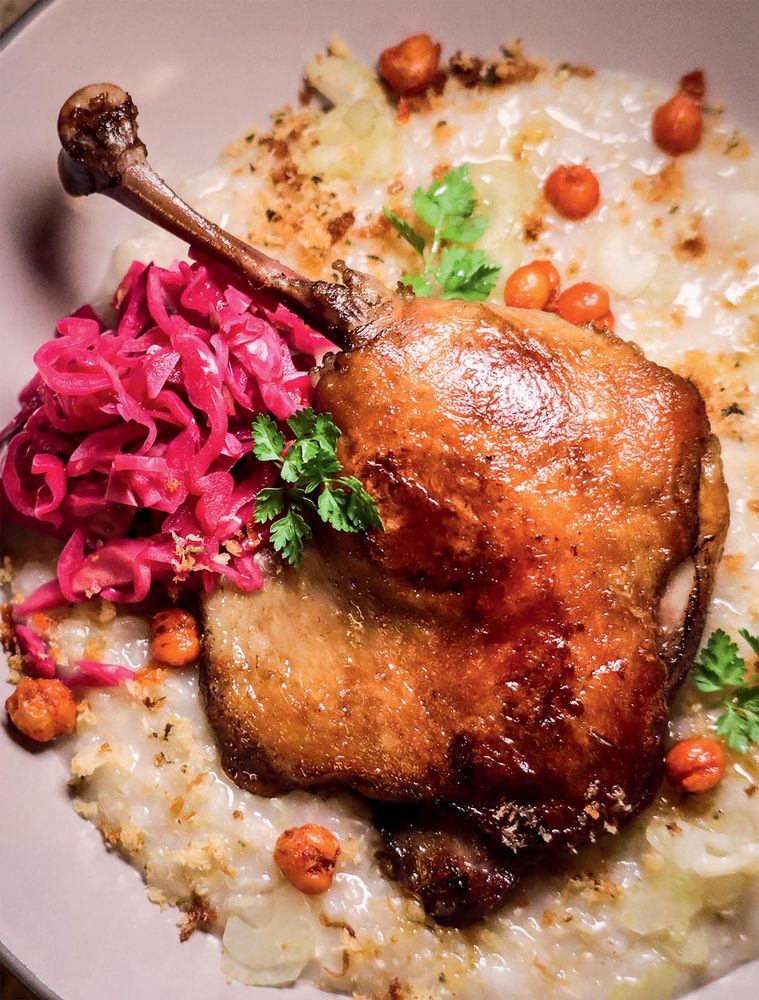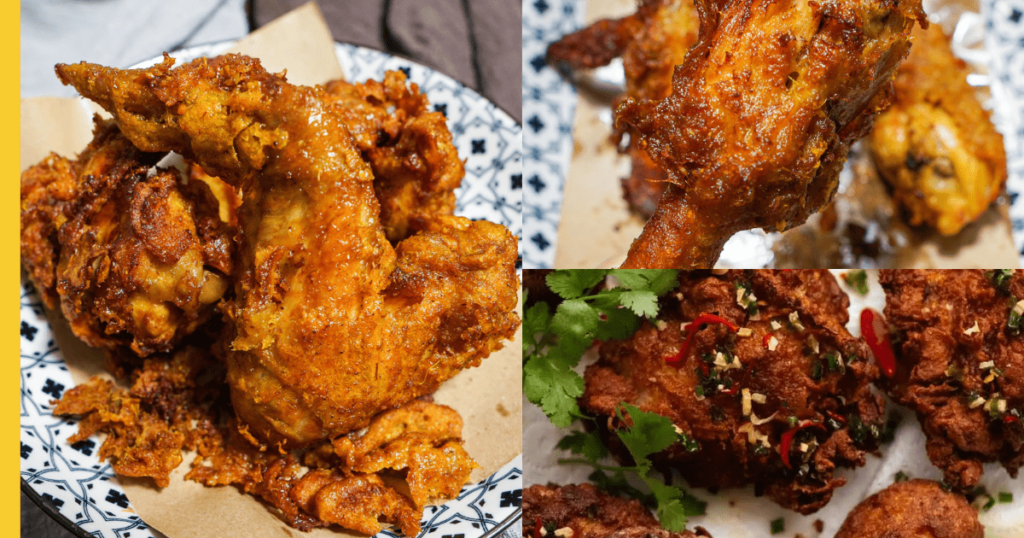Duck Confit: A Journey into Rich Flavor and Culinary History
Related Articles
- A Journey Through The Delicate World Of Macarons (French)
- Martabak: A Culinary Journey Through Indonesia’s Beloved Street Food
- A Culinary Journey: Exploring The World Of Tortilla Soup
- A Creamy Journey: Exploring The History And Magic Of Fettuccine Alfredo
- Sukiyaki: A Journey Through Japan’s One-Pot Wonder
Introduction
Uncover the latest details about Duck Confit: A Journey into Rich Flavor and Culinary History in this comprehensive guide.
Duck Confit: A Journey into Rich Flavor and Culinary History
Duck confit, a French culinary gem, is a testament to the power of slow cooking and the magic of rendered fat. This dish, born from necessity and refined by generations of chefs, offers a symphony of flavors and textures that tantalize the palate. More than just a recipe, duck confit is a journey into the heart of French cuisine, a celebration of patience and the artistry of transforming simple ingredients into culinary masterpieces.
A Glimpse into the Past: The Origins of Duck Confit
The history of duck confit is deeply intertwined with the rural life of southwest France, particularly the region of Gascony. In a time before refrigeration, preserving food was essential for survival. The Gascon farmers, faced with an abundance of ducks, discovered a clever solution: slow-cooking them in their own fat. This method not only preserved the meat but also imbued it with an unparalleled richness and depth of flavor.
The origins of confit can be traced back to the 14th century, where it was a common practice among peasants. The technique was simple yet effective: ducks were plucked, salted, and then slowly simmered in their own rendered fat. This process, known as "confiting," essentially created a natural seal, preventing spoilage and extending the meat’s shelf life.
Over time, duck confit evolved from a practical method of preservation into a culinary art form. The French chefs, renowned for their meticulous approach to food, perfected the technique, transforming it into a dish that was both delicious and elegant.
Understanding the Science Behind Duck Confit
Duck confit is more than just a delicious dish; it’s a fascinating example of culinary chemistry at work. The process of confiting involves several key elements that contribute to its unique characteristics:
- Rendering the Fat: The duck’s own fat is the key ingredient in confit. As the ducks simmer in their fat, the connective tissues break down, releasing collagen and gelatin. This creates a tender, melt-in-your-mouth texture.
- Salt Curing: Salting the duck before cooking plays a crucial role in preserving the meat and enhancing its flavor. The salt draws out moisture, making the skin crispier and the flesh more flavorful.
- Slow Cooking: The slow, gentle heat of confiting allows the fat to render and the meat to cook evenly. This process creates a tender, succulent texture that is impossible to achieve with faster cooking methods.
- Fat Infused Flavor: The fat, infused with the duck’s natural flavors, acts as a flavorful coating, enriching the meat and creating a luxurious mouthfeel.

Mastering the Art of Duck Confit: A Step-by-Step Guide
Creating duck confit at home might seem daunting, but it’s a surprisingly straightforward process. With a little patience and attention to detail, you can recreate this culinary masterpiece in your own kitchen.
Ingredients:
- 2 whole ducks, approximately 5 pounds each
- 1 tablespoon kosher salt
- 1 teaspoon freshly ground black pepper
- 1/2 teaspoon dried thyme
- 1/4 teaspoon dried rosemary
- 1/4 cup olive oil

Equipment:
- Large pot with lid
- Dutch oven or roasting pan
- Meat thermometer
- Large spoon or ladle
- Fine-mesh sieve
- Baking sheet lined with parchment paper
Instructions:
Preparing the Ducks:
- Remove the Feathers: Pluck or singe the feathers from the ducks. You can find detailed instructions online for both methods.
- Remove the Gizzards and Neck: Cut off the neck and remove the gizzards, reserving them for other uses.
- Pat Dry: Thoroughly pat the ducks dry with paper towels. This ensures even cooking and crispier skin.
Salting and Seasoning:
- Salt and Pepper: Liberally salt and pepper the inside and outside of the ducks. Use kosher salt for its larger grains, which help to draw out moisture more effectively.
- Herbs: Rub the ducks with thyme and rosemary. You can customize the herbs to your liking, adding other favorites like sage or bay leaves.
- Refrigerate: Place the ducks in a large container or zip-top bag and refrigerate for at least 12 hours, ideally 24 hours. This allows the salt to cure the meat and draw out moisture.
Confiting the Ducks:
- Render the Fat: Place the ducks in a large pot with a tight-fitting lid. Pour in enough olive oil to cover the ducks by about an inch. Bring the oil to a simmer over medium heat, making sure the oil doesn’t smoke.
- Simmer Slowly: Reduce the heat to low and simmer the ducks, covered, for 2-3 hours, or until the meat is fork-tender and easily pulls away from the bone.
- Check the Temperature: Use a meat thermometer to ensure the internal temperature of the ducks reaches 165°F (74°C).
- Remove and Cool: Carefully remove the ducks from the pot and set them on a wire rack over a baking sheet to cool.
Storing the Confit:
- Strain the Fat: Strain the rendered fat through a fine-mesh sieve lined with cheesecloth into a clean container. Discard any solids.
- Store in the Fat: Once cooled, store the duck confit in the rendered fat in the refrigerator for up to 2 weeks.
Tips for Success:
- Use a Meat Thermometer: A meat thermometer is essential for ensuring the duck is cooked through.
- Don’t Overcrowd the Pot: Make sure there’s enough space between the ducks to allow for even cooking.
- Don’t Overcook: Overcooked duck confit will be dry and tough.
- Use High-Quality Fat: The quality of the fat used for confiting will directly impact the flavor of the dish.
- Store Properly: Store the confit in the rendered fat to prevent it from drying out.
Cooking with Duck Confit: Endless Possibilities
Duck confit is a versatile ingredient that can be enjoyed in a myriad of ways. Its rich flavor and tender texture make it perfect for both simple and elaborate dishes. Here are a few ideas to inspire your culinary creativity:
Classic Preparations:
- Confit de Canard: The most traditional way to enjoy duck confit is simply roasted, skin side up, until the skin is crispy. Serve with a side of roasted potatoes or green beans.
- Confit Canard à l’Orange: This classic French dish features duck confit braised in orange juice and wine, resulting in a sweet and tangy sauce.
- Duck Confit Salad: Combine shredded duck confit with mixed greens, toasted walnuts, and a vinaigrette for a light and flavorful salad.
Modern Interpretations:
- Duck Confit Tacos: Top warm tortillas with shredded duck confit, avocado slices, pickled onions, and a spicy salsa.
- Duck Confit Pizza: Elevate your pizza game by topping a crust with duck confit, caramelized onions, and crumbled goat cheese.
- Duck Confit Pasta: Toss cooked pasta with duck confit, a creamy sauce, and fresh herbs for a satisfying and flavorful meal.
Beyond the Main Course:
- Duck Confit Croquettes: Combine shredded duck confit with mashed potatoes, bread crumbs, and spices, then deep-fry for a crispy and flavorful snack.
- Duck Confit Tartlets: Use duck confit as a filling for savory tartlets, pairing it with ingredients like caramelized onions, dried fruit, and blue cheese.
- Duck Confit Soup: Add duck confit to your favorite soup recipe for an extra layer of flavor and richness.
Mastering the Art of Duck Confit: Tips and Techniques
Duck confit, like any culinary endeavor, requires a certain level of finesse. Here are some tips and techniques to elevate your confit game:
Skin Care:
- Crisp the Skin: For the ultimate crispy skin, pat the ducks dry and score the skin in a criss-cross pattern before cooking.
- Roast After Confiting: After confiting, roast the ducks skin-side up in a hot oven for 15-20 minutes to crisp the skin.
- Remove Excess Fat: Before serving, remove any excess fat from the skin to prevent it from becoming greasy.
Flavor Enhancements:
- Spice It Up: Experiment with different spices and herbs to add depth and complexity to the flavor.
- Citrus Burst: Add orange or lemon zest to the confit during cooking for a bright, citrusy note.
- Sweet and Savory: Combine duck confit with sweet ingredients like honey, maple syrup, or dried fruits for a unique flavor combination.
Beyond the Basics:
- Confit Other Meats: The confit technique can be applied to other meats like chicken, goose, or even rabbit.
- Use the Fat Wisely: The rendered fat from duck confit is incredibly flavorful and can be used for cooking other dishes, like roasted vegetables or pasta sauces.
- Don’t Discard the Bones: Use the leftover duck bones to make a flavorful stock for soups or stews.
The Culinary Legacy of Duck Confit
Duck confit is more than just a dish; it’s a testament to the ingenuity and culinary heritage of the French people. It’s a reminder that the simplest ingredients, when treated with care and respect, can be transformed into something truly extraordinary.
From its humble beginnings as a method of preservation to its status as a culinary icon, duck confit has evolved over centuries, reflecting the changing tastes and techniques of French cuisine. Today, it remains a cherished dish, enjoyed by food enthusiasts worldwide, a testament to the enduring power of tradition and the artistry of cooking.
Duck confit is a journey into the heart of French cuisine, a celebration of patience and the artistry of transforming simple ingredients into culinary masterpieces. It’s a dish that invites us to slow down, savor the moment, and appreciate the beauty of food. So, the next time you find yourself craving a truly memorable meal, consider embarking on your own duck confit adventure. You might just discover a new culinary favorite that will become a staple in your own kitchen.
Closure
Thank you for reading! Stay with us for more insights on Duck Confit: A Journey into Rich Flavor and Culinary History.
Make sure to follow us for more exciting news and reviews.
Feel free to share your experience with Duck Confit: A Journey into Rich Flavor and Culinary History in the comment section.
Stay informed with our next updates on Duck Confit: A Journey into Rich Flavor and Culinary History and other exciting topics.






